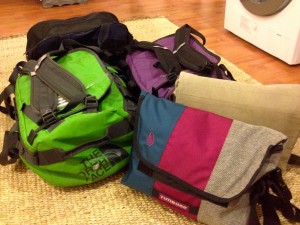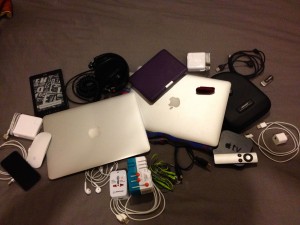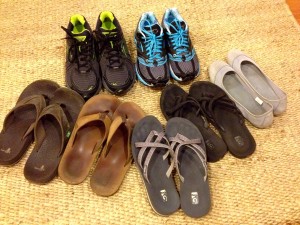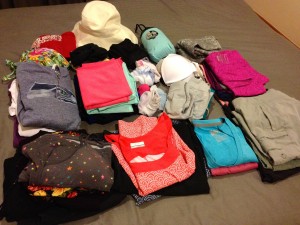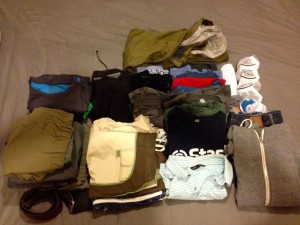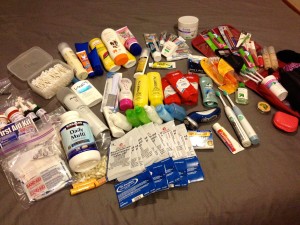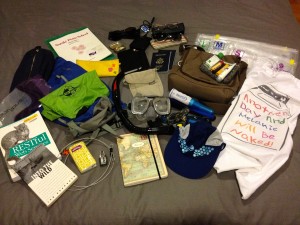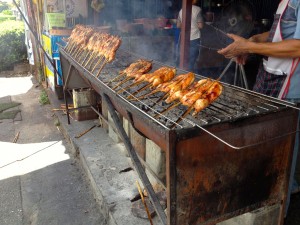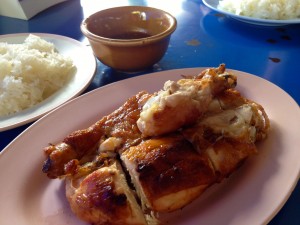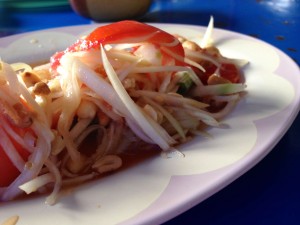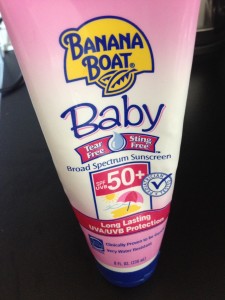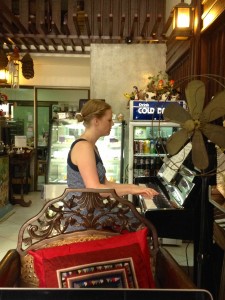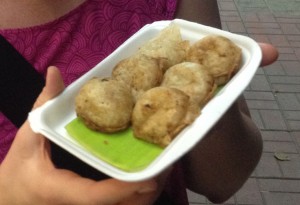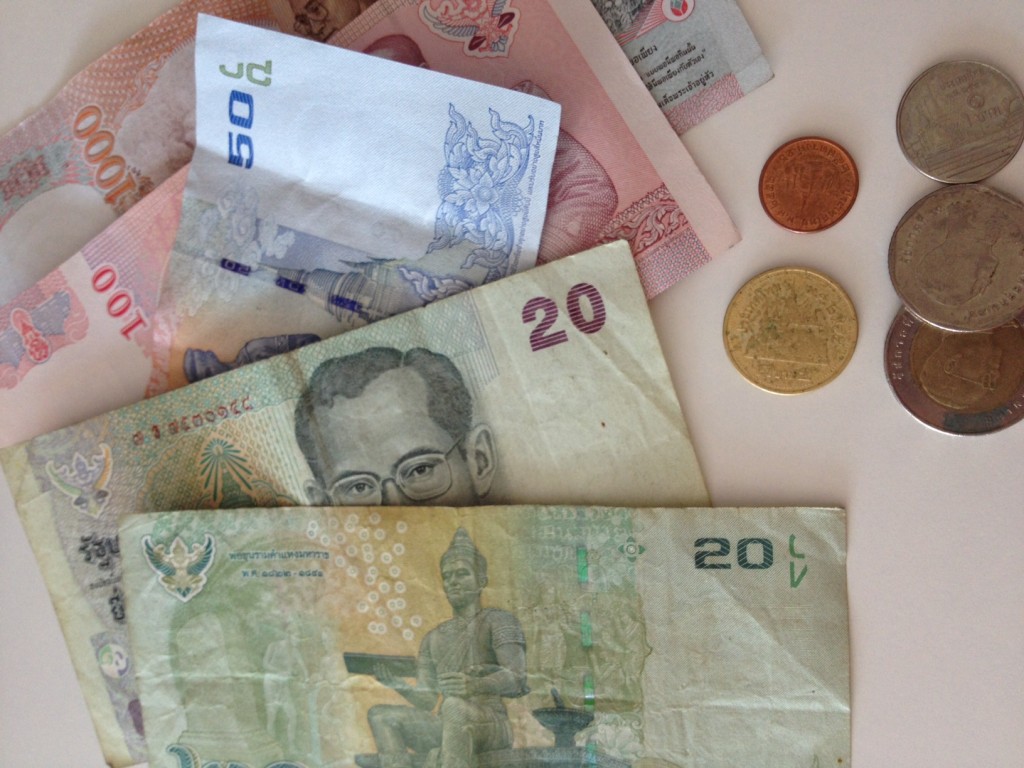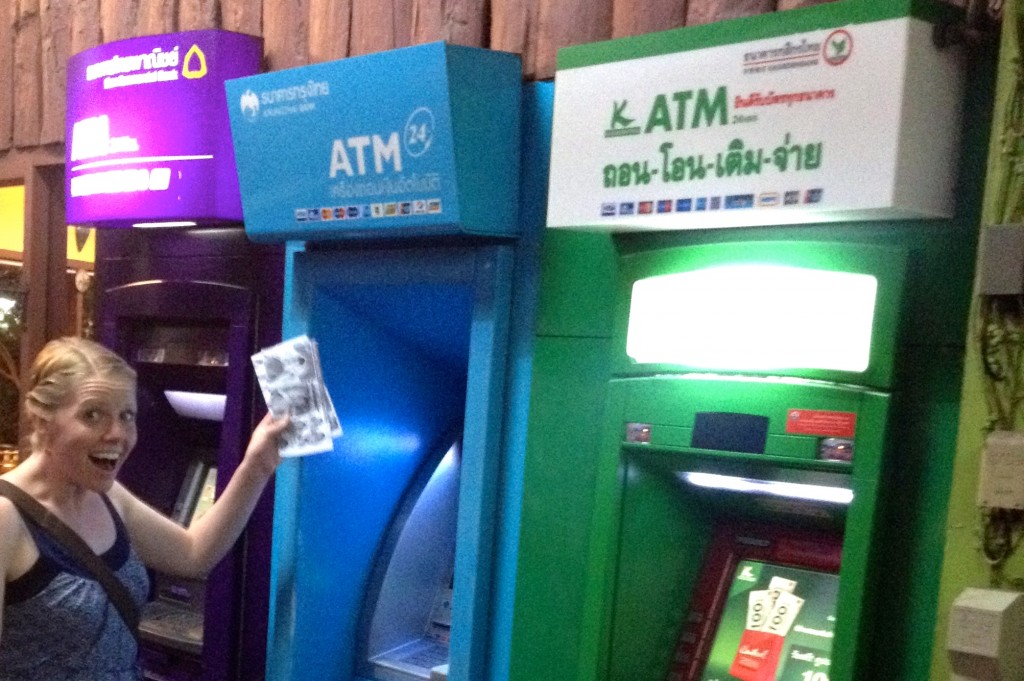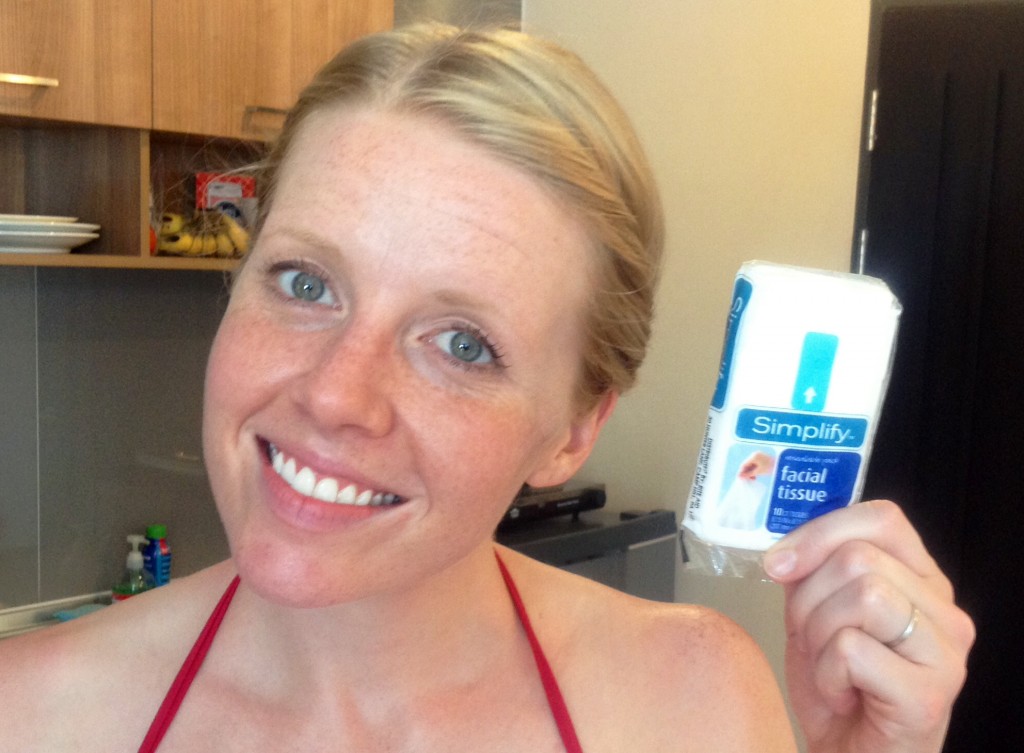What do you pack when you’re going to spend a year traveling Thailand, Myanmar, Cambodia, Laos, Singapore, The Philippines, and Indonesia? We’re still not 100% sure about the answer to that question, but here’s a peek at what we brought along with us for our year-long adventure.
Folks close to us might be familiar with how picky we are about things we purchase. When we registered for our wedding, we spent weeks researching and agonizing over the best products, appliances, housewares, etc, and we do the same with our travel gear. Almost everything we linked to below (except where noted) absolutely has our endorsement and should be considered Kevin-and-Melanie-approved. If you choose to buy any of these things for your own travels, we hope they serve you as well as they have us!
Bags
Our goal was to be able to carry everything we brought on our backs. No roller bags allowed! We also didn’t want to bring so much stuff that it’ll be annoying to change locations every few weeks. We are based initially in Chiang Mai for 7 months, then we’ll be hopping around Southeast Asia, so we need to be mobile. We’ll be getting rid of the black bag in the back when we leave Chiang Mai and will each have just our North Face duffel and our laptop bag. The black bag in the back was filled with sunblock, half-used shampoo and soap bottles, and other toiletries we knew we’d use up during our 7 months in Chiang Mai.
The Bags:
- North Face Base Camp Duffel Bags (Size Small) – We absolutely love these bags, and have taken them to Europe, Belize, and now all over Thailand. They hold up great and are fabulous in somewhat wet environments (after a boat ride in Belize, we were the only ones in our tour group with completely dry clothes in our bag!) They fit well in overhead bins on most airplanes.
- Melanie’s Timbuk2 Laptop Bag – Perfect for a small laptop, can carry everything but a small child.
- Kevin’s Laptop Bag – More manly, sans the sassy pink stripe that mine has
Electronics
What can we say? We love electronics… Here’s what we brought and what we wish we had left behind:
- Computers: 13″ Macbook Air & charger and 13″ Macbook Pro & charger. (Very happy we brought these guys – their 8+ hour battery life is fantastic)
- Reading: Melanie’s Kindle Paperwhite with awesome case, Kevin’s Basic Kindle
- Kevin’s Sony Headphones (best headphones ever) & iPhone Headphones
- Melanie’s Bose Noise Canceling Headphones and In-ear Headphones (I got killer deals on both of these sets of headphones, but would still only give them lukewarm reviews.)
- Melanie’s Fitbit One – An awesome clip-on pedometer that syncs to an app on my iPhone. This thing tracks steps, mileage, flights of stairs, calories burned, and can even track your sleep. It has been put in the washing machine and dropped in the toilet and still survives.
- Apple TV & Remote (wish we had not brought – even our upgraded internet is too slow to use the Apple TV)
- HDMI Cable (Kevin’s Macbook Pro has an HDMI port, so we can hook it up to watch online TV Shows and Movies through the TV in our apartment)
- Mighty Mouse
- Two iPhones (we got Thai sim cards so we have local phone and data plans), with cords & chargers. These also act as our camera.
- Voltage Adapter/Converters
Shoes
The List:
- Running Shoes, of course (our condo has a gym, so we are definitely doing some running! Seattle readers – if you haven’t been to Brooks Outlet in Bothell, WA, drop everything you are doing and go now!)
- 2 Pairs of Teva Flip Flops for Melanie
- Sanuk Flip Flops for Kevin
- Reef Flip Flops for Kevin
- 1 Pair of the world’s most comfy flats for Melanie
Melanie’s Clothes
Quick-dry is the name of the game for clothing in a tropical country. Have you heard of swamp ass? If you haven’t, where do you live, Alaska?! Well, if you come over here with only cloth underwear and non quick-dry shorts, you’re going to be living in your own little swamp ass hell. Trust me, quick dry is the way to go. Plus, you can wash laundry in hotel sinks, hang it up, and you’ll be ready to roll the next day!
The List:
- A hat, because I’m the whitest person ever
- 3 quick-dry dresses – I searched all over the internet for other travel dresses, but nothing can beat these, so I just have three different colors. Please don’t judge me.
- 3 pairs of quick-dry shorts
- 1 pair of quick-dry pants that roll up into capri pants (definitely will need these – you should have your knees covered to visit temples)
- 2 quick-dry t-shirts & 5 quick-dry tank tops
- 2 normal bras & 3 sports bras
- 5 pairs of socks (3 would’ve been plenty)
- 3 pairs of quick dry underwear (5 would’ve been better) & 5 pairs of cloth underwear (these are nice to have to just feel normal every once in awhile, and better for sleeping, in my opinion)
- 2 running outfits, plus 2 extra pairs of gym shorts
- 2 hoodies (because how could I come over here without at least one piece of Seahawks gear. Turns out 2 was definitely overkill, though.)
- A long-sleeve white mesh shirt rated at SPF 50, for snorkeling
- 2 swim suits, a one-piece for snorkeling and a bikini for beach lounging
- Rain jacket
- Scarf (for covering my shoulders if we visit any temples)
- Pajamas
- Beach skirt
Kevin’s Clothes
The List:
- 2 pairs of quick-dry shorts with a hidden zip-up security pocket
- 1 pair of pants, with zip-off legs to turn into shorts
- 2 pairs of swim trunks
- Rain jacket
- Hoodie
- 5 pairs of socks (too many!)
- 4 quick-dry t-shirts
- 4 regular t-shirts
- 1 cotton polo, for “dressy” days
- 3 quick-dry boxers
- 3 regular boxers
- 2 pairs of gym clothes
- 1 pair of jeans (only wore ‘em on the flight here, it’s too hot here for jeans)
- Leather belt with a bottle-opener belt buckle
Toiletries
“Western” toiletries are a little bit tough to find here, and you have to pay a premium when you do find them. We brought along a LOT of toiletries, mainly because we couldn’t bring ourselves to just throw them away when we moved out of our house. If you’re willing to use local brands, you’ll save a lot of money. For example, you can find a Thai brand of deoderant for just $0.60 US!
The List:
- Sunblock (7 bottles) – bring as much as you can fit! It’s so expensive here!
- Deoderant (Kevin brought 3 of his fave Old Spice brand, which we have yet to find in any stores here)
- Electric toothbrushes and chargers – can’t go a year without these puppies
- Daily Multivitamins – these are impossible to find here, and counterfeit versions run rampant. Best to bring along if you rely on these for your nutrients.
- Birth control, 14-month supply – because seriously, WHO could stand to be pregnant in 90+ degree temperatures. Birth control pills are available over the counter here very cheap, but it was also cheap and easy to stock up through my health insurance before we left. I’m glad I did.
- Bonine, the best motion sickness medicine out there. Best to bring this along, I don’t think it’s easy to find here.
- Ciproflaxin (prescription antibiotic for traveler’s tummy, we never, ever travel without this.)
- Allergy medication
- Excedrin, ibuprofin, and immodium
- Chapstick, because Burt’s Bee’s isn’t sold in Thailand, so sad.
- Electric Razor
- Misc. lotions, shampoos, soaps
- Hand sanitizer, because not all bathrooms here have soap
- Melanie’s makeup
- Foot scraper – really glad we brought this. Wearing flip flops everyday doesn’t promote soft feet, need to keep those calluses in check!
- Bug spray
- Cortizone cream for bug bites
- Bandaids and antibiotic ointment
- Hair brush and comb
- Note: don’t even think about bringing a hair dryer. If you must have one, buy it here so you don’t have voltage compatibility problems, but you should know I think you’re crazy for blow drying your hair when it’s 90+ degrees outside.
Miscellaneous
The List:
- Keen travel purse, with about six hundred hidden pockets
- Bag for dirty laundry (someone gave me this for High School graduation a decade ago, it is finally having its 15 minutes of fame)
- Vacuum pack bags, for maximizing your bag space
- Sunglasses
- Steripen, a UV light pen for sterilizing tap water if we’re in a pinch. Highly recommend!
- Head lamps (We brought 2, one would’ve been fine. Power outages are fairly common everywhere we’ve visited, and these serve us well when that happens!)
- A hat for Kevin
- Travel journal, moleskin notebooks for writing down ideas, and pens
- Kevin’s snorkel goggles and mask (Prescription masks are tricky to find here, but if you don’t need prescription lenses, you can easily borrow or rent them at any beach destination.)
- Dry sack (small size)
- Day pack (we swear by these day packs, they are cheap and awesome)
- Travel lock and cable, to secure our bags to a stationery object in hotel rooms
- Platypus pack-flat water bottle
- Super portable external hard drive that doesn’t require an external power source
- Money purse for occasions where we feel like we need to wear our valuables under our clothes (haven’t used it yet, you could easily skip this if you have clothes with a security pocket)
- Travel kleenex, for those “Oh no, there’s no toilet paper in here!” moments
- 2 books Kevin wanted to read: RESTful Web Services and Into the Wild (we will leave these in Chiang Mai)
- One piano music book
- Passports
- 2 credit cards, 3 debit cards, $1,000 US Currency (for emergencies) and our driver’s licenses
It’s definitely easier to pack for a year-long trip when you’re facing just one climate: HOT. We hope this list will be helpful to others thinking about making a similar trip. If nothing else, we hope this list makes you understand why we seem to be wearing the same four outfits in ALL of our photos.
We want to hear from you!
What’s the one thing you never travel without? Sunblock? Ambien? Chocolate? Let us know!
